What do you do when you’re entering a new classroom, but this time, you have to leave it the way you found it, every single week?
Well, you ask #langchat, of course.
Two and a half years ago I took to Twitter to get ideas from my amazing #langchat PLN could come up. I was re-entering the classroom, with ground zero beginners for the first time in years, and I was finally committed to try a word wall. Problem: this time, I’d see my students once a week, and as I was in borrowed space, I had to set up and take down my “classroom” every single time.
My #langchat community came up with a variety of suggestions, including a display board with clothespins on it so I could switch out the words. I tried that, but I couldn’t get the words as big as I wanted and could only fit 8 on one board. It was a lot of real estate and work for 8 words.
Someone had another idea:
What about a shower curtain?
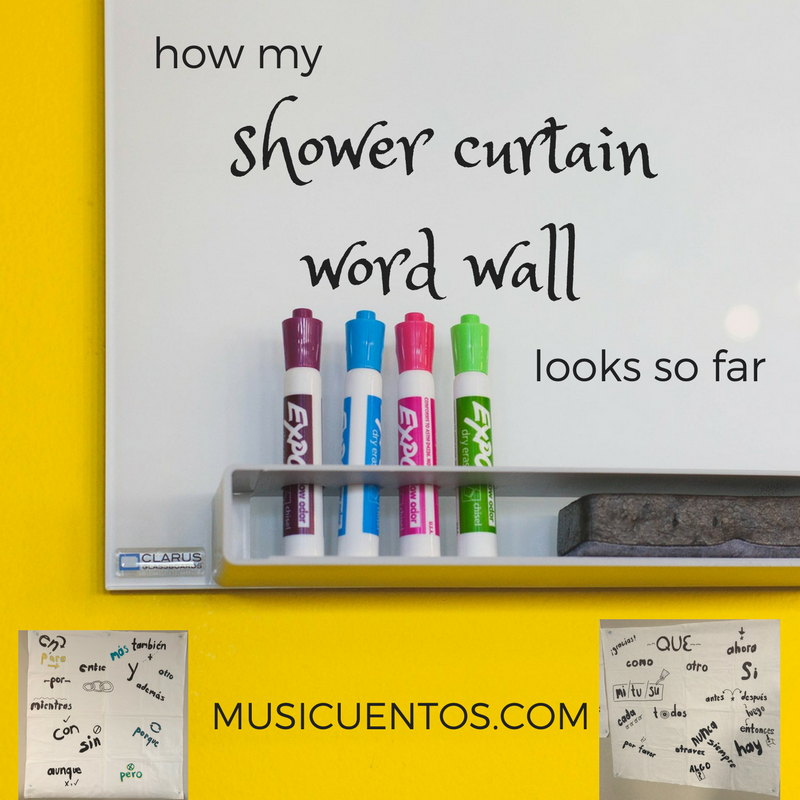
I don’t think anyone had tried it, but this is the stuff good brain storms are made of, and I’m here to tell you our shower curtain has served us well. I spent about $5 on a white shower curtain and cut off the top where the rings go and the bottom with the magnets. Then, I cut the whole curtain into four equal parts, for two reasons:
- I needed a manageable size.
- I wanted to group words together meaningfully.
What do I mean by group words together? I wanted my learners and myself to know where to look to find a particular type of word. With my young novices, these are the four categories my four squares became:
- Verbs in “yo” present
- Verbs in (s)he present
- Connection words
- What I call “chispas”- sparky little words that pop up everywhere and help you tell when, whose, etc. (think “always,” “her,” etc.)
Two more things before I show you how they turned out.
First, I didn’t “build” my word walls before we started. We added the words as they came up in our input, which effectively called learners’ attention to them, and slowly built the number of words in a very manageable way. (See how Allison discovered that putting a lot of words up at once wasn’t perhaps as effective as it could have been.) Bonus about the shower curtains: They’re impermeable, so I can write on them with black Sharpie while they’re on the wall, and it doesn’t bleed through.
Second, I didn’t use any English on my word walls. I’ve been using them for three years and we never have. That’s because my word walls are not input, they are reference. They are supposed to be words we have already acquired or are in the process of acquiring, but it’s helpful to be able to point them out over and over to cement that memory. Personally I don’t see myself ever using a word wall that has both languages on it permanently, but creative teachers have come up with ways to do both: I’ve seen post-it notes with the English used and then removed, as well as dry-erase marker English on laminated target language words.
Ready for pictures? In the middle of our sixth semester (seeing my learners once a week, remember) here’s how our word (shower curtain) walls look.
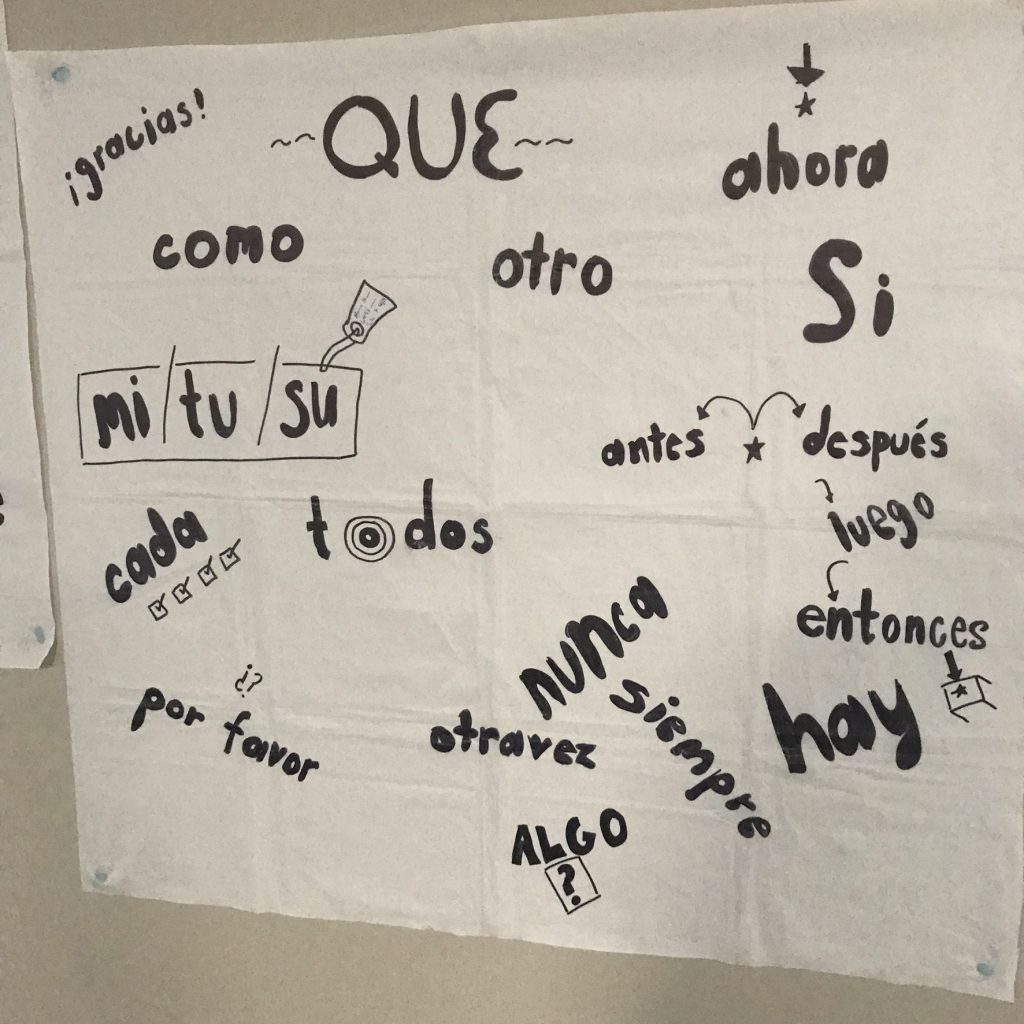
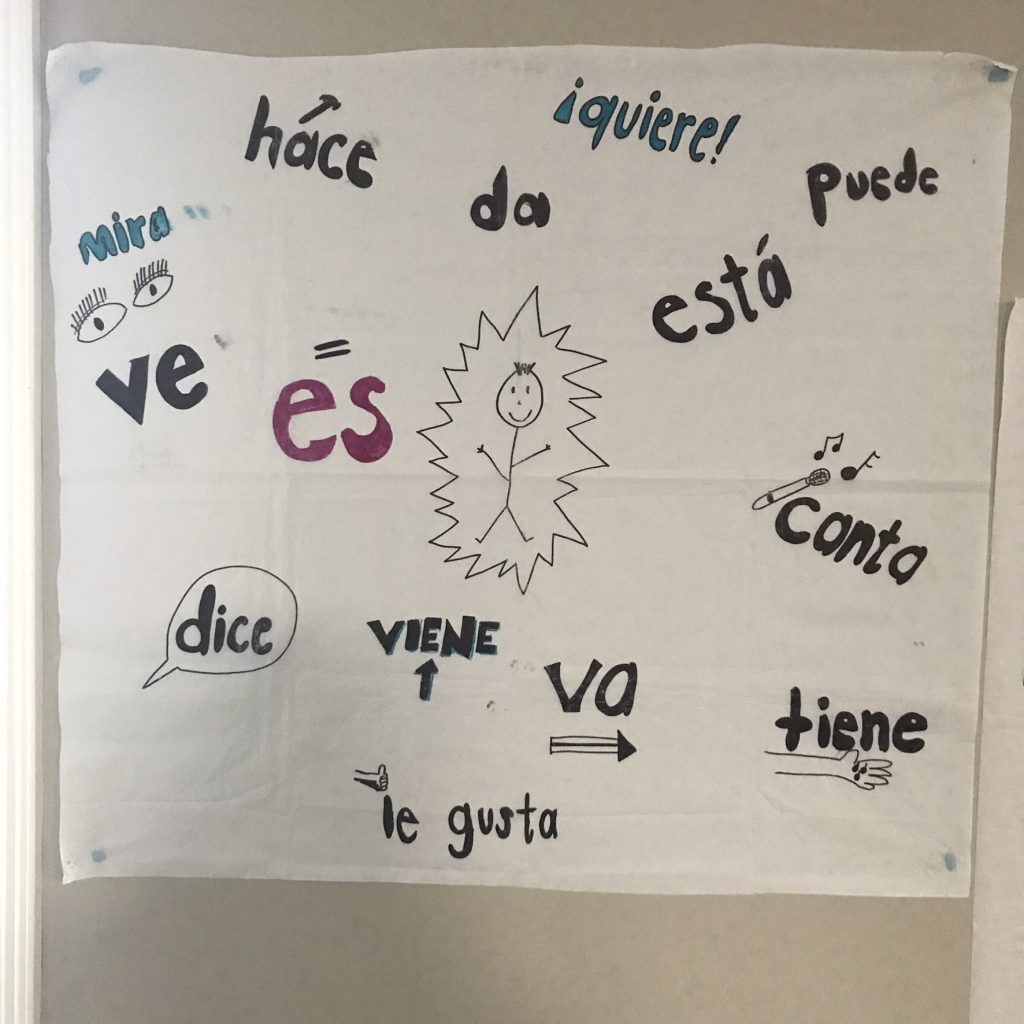
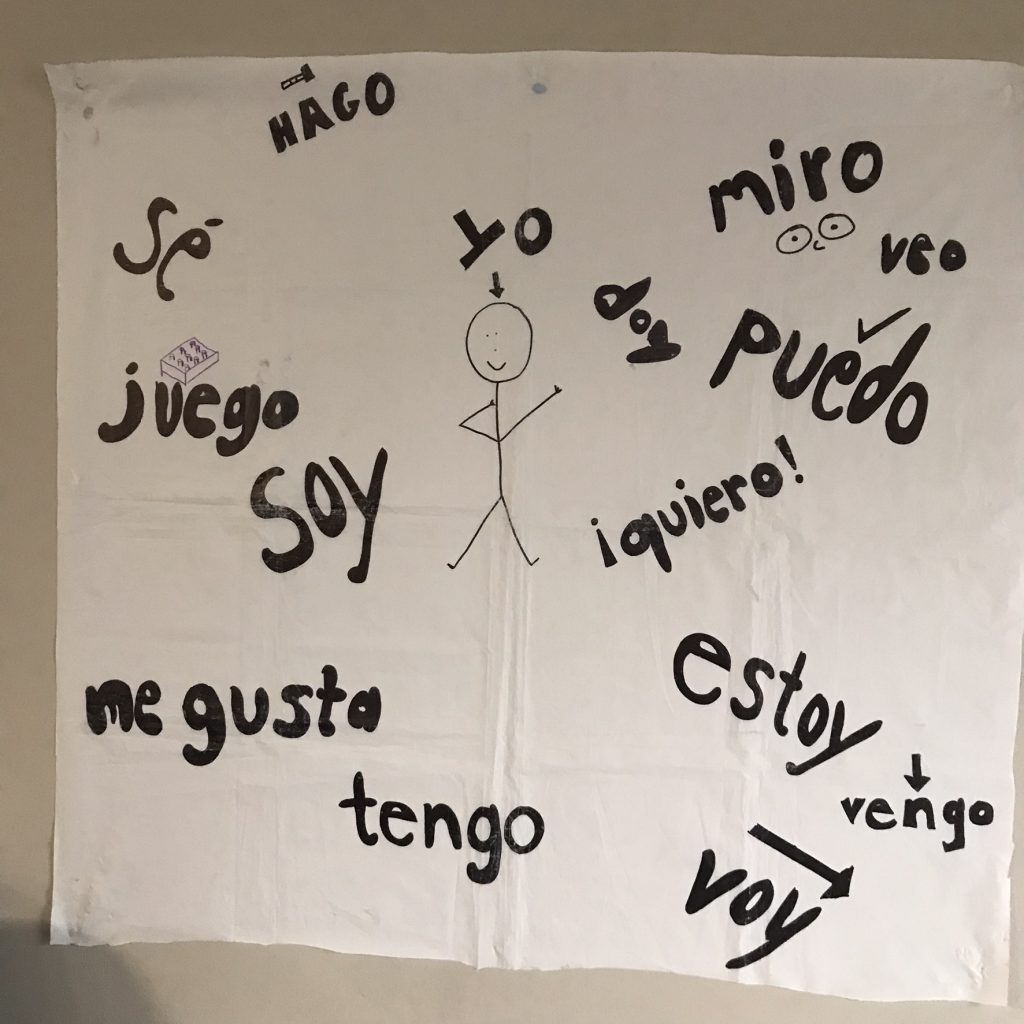
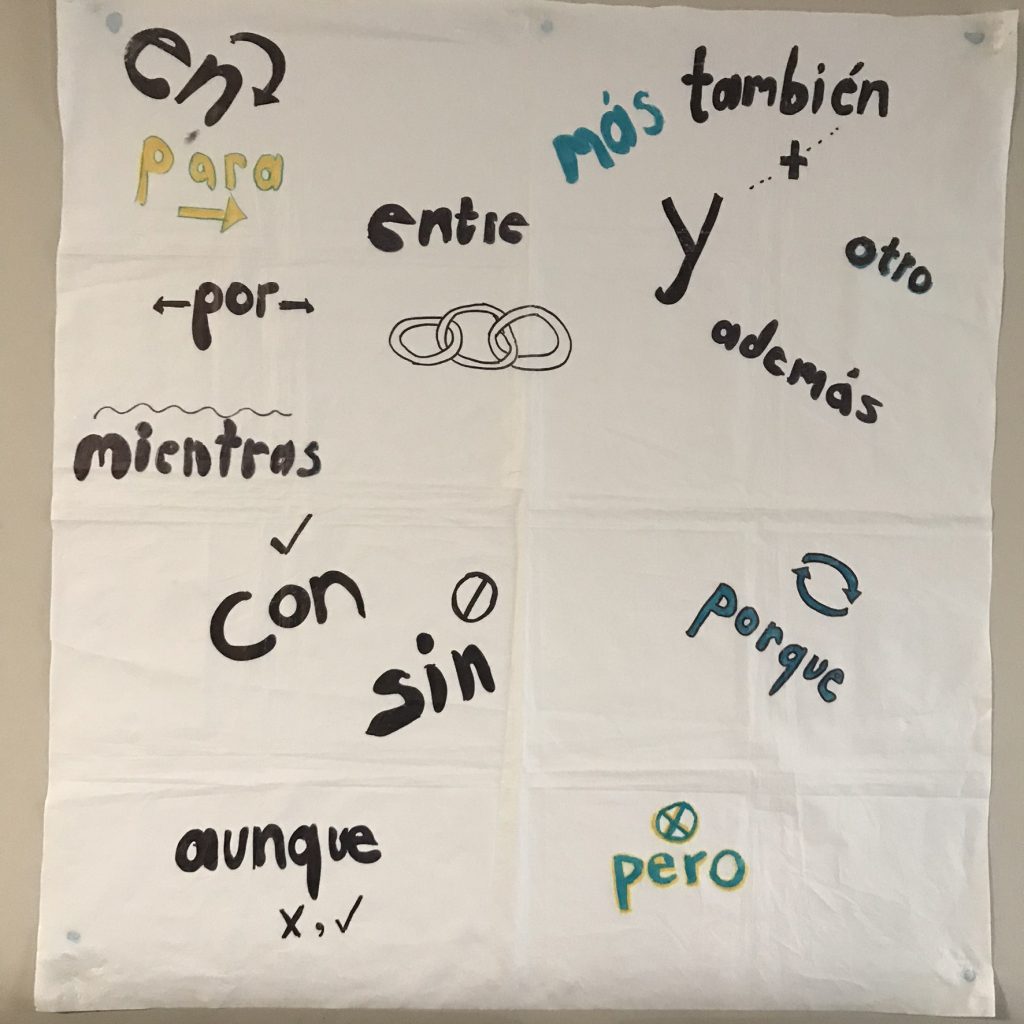
What do you think? Any recommendations / ideas for me?
 If Musicuentos has significantly helped you in your language teaching journey, consider becoming part of the “thanks” crew on Patreon. “La lotería” patrons receive every resource I produce, whether it’s a $2 activity or a $50 ebook guide, as thanks for their sponsorship.
If Musicuentos has significantly helped you in your language teaching journey, consider becoming part of the “thanks” crew on Patreon. “La lotería” patrons receive every resource I produce, whether it’s a $2 activity or a $50 ebook guide, as thanks for their sponsorship.
2 Comments
Comments are closed.

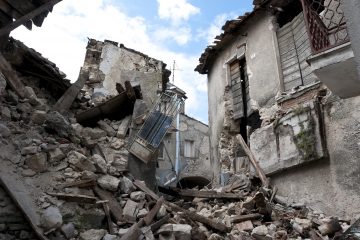


[…] rank, and recently posted about how we put our most helpful high-frequency words and phrases on our shower-curtain word walls, it stands to reason that I’m a big fan of high-frequency […]
[…] I’ve gleaned ideas from the Twitter PLN for several workarounds, including shower-curtain word walls, but between way too many plates to spin and getting kids to school and hanging up those shower […]